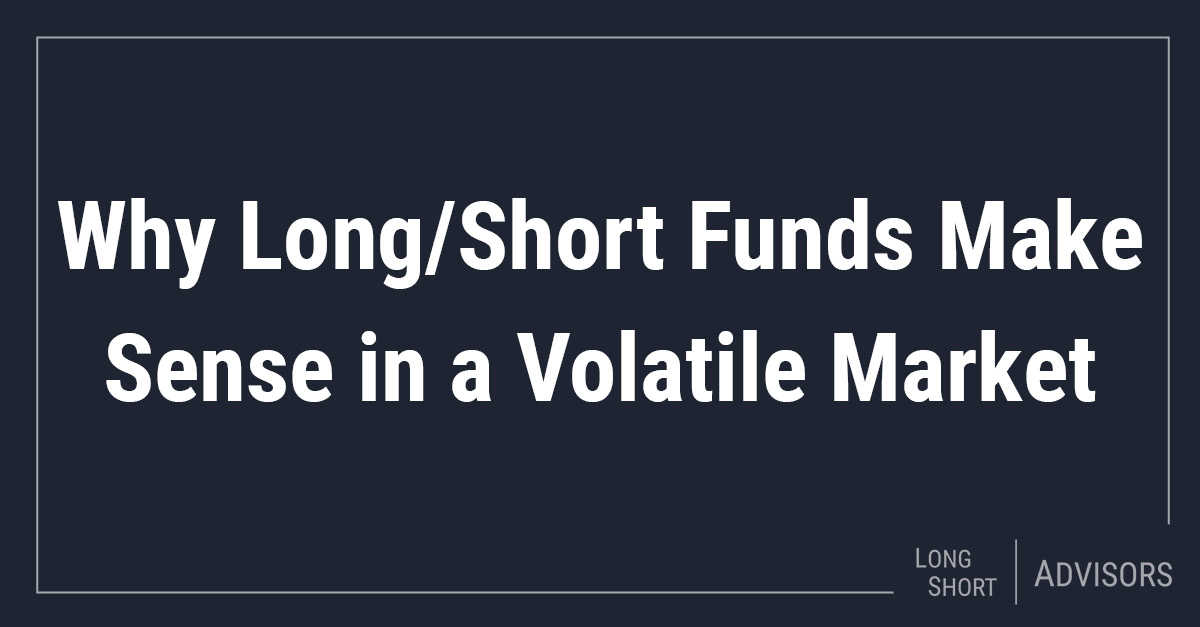Why Long/Short Funds Make Sense in a Volatile Market
We know that holding a diversified basket of equities has rewarded patient investors over most extended time periods with some handsome returns. The so-called equity risk premium, or incremental return over risk-free assets for holding stocks, has been 5 or 6 percentage points, which sounds very attractive. The problem is that returns are highly variable, unpredictable, and can be negative—even sharply negative--during certain periods. Market volatility can spike, which scares people and induces them to sell (or buy) at inopportune times. In some ways we just can’t help it: When facing a perceived threat, our primal instincts tell us to fight, flee, or freeze, as if we’re confronted by a wild beast on the savanna.
Robert Shiller was awarded a Nobel Prize in economics for his pioneering research in behavioral economics. He challenged the orthodoxy of the efficient-market hypothesis by showing that the stock market isn’t completely rational. Due to investor emotions and behavior, stock prices typically bounce around far more than changes in the underlying business and prices could become quite detached from company fundamentals.
An Investor’s Dilemma
Therein lies one of the central challenges for investors and their financial advisors: How to stay invested in stocks through the inevitable bouts of market volatility and potentially severe equity drawdowns. In other words, our rational side knows that market timing doesn’t work and that, to enjoy the fruit of compounded equity returns over decades, we need to keep our seat at the table. Yet when volatility soars, unnerved and emotional investors commit common behavioral errors such as overreacting to short-term events and extrapolating the past into the future.
In investment, there is a time-weighted return, which measures a fund or portfolio’s actual return, and there is investor return, which incorporates the actual investor flows into and out of a fund. Broadly speaking, the wider the gap between a portfolio’s compounded and shareholder return, the higher the fund’s volatility and, frequently, the more prone shareholders are to committing behavioral blunders such as buying high and selling low. Morningstar estimates that, on average, investors earn about 1.7 percentage points (annualized) less than their funds due to ill-timed transactions, a gap that wreaks havoc with compounded returns over time.
We can’t predict the future, but it’s a safe bet to predict that at some point turbulence will return to the market, as placid as it may seem today. It’s certainly not as if we’re short of potential unpleasant surprises in finance or politics at home or overseas. The key is to remain invested long term to reap the equity risk premium.
Conclusion
One solution to this dilemma could be to include an allocation to a long/short stock fund in a diversified portfolio. A well-managed long-short fund will reduce volatility and a fund’s maximum drawdown (remember, due to the math, if an asset declines 50% in value, you need a 100% return just to recoup your losses). The fund strives to produce capital growth during periods of rising (or stable) prices and provide downside risk mitigation during the unavoidable stretches of declining stock prices. In other words, investors are more likely to keep their seats and enjoy the compelling math of compounded stock returns over time.
17934156-UFD 02/28/2024







